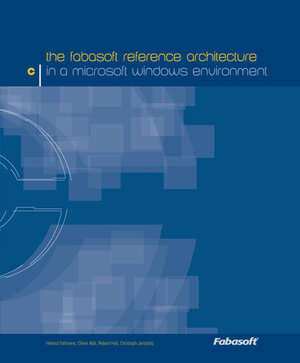
×
![Buchcover ISBN 9783902495204]()
Project manager of e-government projects and administrators of high-availability systems
The Fabasoft Reference Architecture in a Microsoft Windows Environment
von Helmut Fallmann, Robert Hell, Christoph Jerschitz und Oliver AlblThe success of a company in the global marketplace is based on the use of information and communication technology. Companies that have already converted their business processes to E-Business are dependent on the availability of their systems.
Technology for ensuring higher availability and more error-tolerant systems has developed considerably over the past few years. That is why Fabasoft developed a Reference Architecture to ensure that the necessary availability, performance, stability and scalability can be maintained during production. This book presents the architecture for high-availability online services, an architecture that represents the current state of the art for systems implemented using the Microsoft Windows Server 2003 operating system.
On the one hand it gives readers a detailed description of the functionality of all subsystems in the Fabasoft Reference Architecture, the desk for example, various network components, load balancer, web server farm, backend server cluster, through to storage systems, and so on.
On the other hand it outlines how each of these subsystems can be deployed for high availability and which factors need to be taken into account regarding performance. A high degree of fault tolerance for the overall system is achieved because each of the subsystems is covered in such detail.
In addition to the redundant implementation of systems components further activities are needed to achieve high availability. To this end the book goes on to describe further system-critical issues such as data security (backup and recovery), business processes and system management in the context of high availability.
Technology for ensuring higher availability and more error-tolerant systems has developed considerably over the past few years. That is why Fabasoft developed a Reference Architecture to ensure that the necessary availability, performance, stability and scalability can be maintained during production. This book presents the architecture for high-availability online services, an architecture that represents the current state of the art for systems implemented using the Microsoft Windows Server 2003 operating system.
On the one hand it gives readers a detailed description of the functionality of all subsystems in the Fabasoft Reference Architecture, the desk for example, various network components, load balancer, web server farm, backend server cluster, through to storage systems, and so on.
On the other hand it outlines how each of these subsystems can be deployed for high availability and which factors need to be taken into account regarding performance. A high degree of fault tolerance for the overall system is achieved because each of the subsystems is covered in such detail.
In addition to the redundant implementation of systems components further activities are needed to achieve high availability. To this end the book goes on to describe further system-critical issues such as data security (backup and recovery), business processes and system management in the context of high availability.


